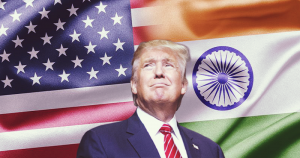
What Is H1B Visa? How Trump’s New Rules Benefit America But Hit Indian Immigrants & What’s Next? Everything Explained
After a year long ambiguity in immigration phenomenon, here came a moment when Donald Trump cleared the clouds slamming the Indians by raising the minimum cap salary limits.
What Is H1B Visa?
The new regulations imposed by Donald Trump alarmed the Indians abroad, his take on H1B visas is however expected. Meanwhile, the H-1B is a kind of visa that is given to Indians who are been employed abroad, this visa indirectly helps US companies to hire foreign workers for high-skilled jobs.
This procedure of H1B visa was initiated by then President George Bush in 1994. The H-1B visa cap is currently 65,000, and an additional 20,000 visas are granted to employees with master’s degrees from American universities.
The actual reason behind introducing this visa is to help American firms deal with labour shortages in rapidly growing jobs that require specialised skills, such as in software programming, research and engineering.
What Is The Need For New Rules In America?
Despite the earlier statistics, now, after 27 years of transparency in H1B visa rules for the first time, the modifications proceeded. It has been 5 years and there is a rapid decline in employment in the USA, considering this issue, Trump amended the existing law to make progress in current statistics.
Now, India, the largest exporter of IT workforce to the US, could be jolted if the H-1B Visa Bill, which was tabled in the House of Representatives today, becomes a law.
What Are The Changes?
IT big shots -TCS, Infosys, Wipro and others, that enjoy significant cost advantages by sending Indian engineers to the US, are likely to be hit if the minimum salary cap for H-1B visas is raised to $130,000 from its current $60,000.
Trump’s take on the immigration already let the four IT company stocks plunged on the Bombay Stock Exchange, the companies refused to comment anything on the President’s take.
“The bill does not treat all IT service companies with H-1B visa holders equally, and the provisions are biased against H-1B dependent companies,” said NASSCOM, the industry body for software and services companies in a statement.
“The bill does nothing to address the underlying shortage of STEM-skilled workers, which has led all companies to have a calibrated strategy of hiring locally and bridging the skills gap by bringing skilled workers on non-immigrant visas including H-1Bs,” the statement further read.
How This Changes Effect Indians?
The major victim of the law will be India, as it happens to be the largest receiver of H-1B visas in the world. The US issued more than a million visas to Indians in 2016, which accounted for 70% of all H1B visas issued worldwide.
Those Indians abroad has settled down at their respective places in States, now, after the imposition of this law more than 60 percent of Indians will be sent back to India as their salaries barely touch $70,000 in an average. All of the sudden massive crisis occurs for the Indian IT companies (as Indian IT companies will ouster a large number of employees in abroad) and unemployment hits hard.
Despite the instant victims, adverse effects take place for the prospective IT employees (those who were doing masters in the USA paying fair amount of fees, as they’ll be sent back if their salary cap doesn’t reach $130,000).
How This Effects America?
Despite the business statistics, favourable growth in employment is expected which is the basic and prominent outcome after the law is implemented.
Meanwhile, Sanchit Vir Gogia, chief analyst at Greyhound Research said:
“Skilled foreign workers who come to work in the US by the route of H1-B visas don’t just directly supplement the US IT industry with specialised skill sets, they also contribute indirectly to other industries in the US. Often H1-B workers bring their families along and thereby bring additional business for other industries like real estate, banking, hospitality to name a few. The effects of this announcement will impact the GDP and the overall business economy and growth of US.”
Contrary to this ‘upcoming law’, NASSCOM said it will continue to engage with the US administration and legislators both directly and through the Government of India. The focus would be on highlighting the value contribution of India’s IT sector as a “net creator” of jobs in the America.
What Next?
One thing is clear, you don’t have to expect anything regarding the Trump’s next move because he did everything that he said during the elections campaign. The wall between Mexico and the United States, the Muslim law, the restrictions on H1B visa everything is the part of the plan he made earlier claiming ‘America First and Make America Great Again’.
It is believed that his next take will be on the Indian students, i.e; F1 visa holders.